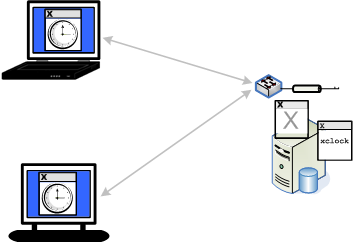
- Rejoin computer to domain remotely how to#
- Rejoin computer to domain remotely windows 10#
- Rejoin computer to domain remotely password#
- Rejoin computer to domain remotely Pc#
- Rejoin computer to domain remotely windows 8#
You will need to log on using a local Administrator account. In this method, we will reestablish trust between the domain controller and client using PowerShell. Method 3: Reestablish trust through PowerShell
Rejoin computer to domain remotely windows 10#
Log on Windows 10 using domain user account.Choose a domain and type the domain In our example it is.
Rejoin computer to domain remotely password#
Type domain Administrator account and password and then click OK.  Choose Workgroup and type Workgroup In our example, the Workgroup name is WORKGROUP.
Choose Workgroup and type Workgroup In our example, the Workgroup name is WORKGROUP.  Click Change to add machine to Workgroup.
Click Change to add machine to Workgroup. Rejoin computer to domain remotely Pc#
On the right side of the File Explorer right click on This PC and choose Properties. Hold Windows logo and press E to open File Explorer.  Log on Windows 10 using local Administrator account.
Log on Windows 10 using local Administrator account. Rejoin computer to domain remotely windows 8#
The same procedure is compatible with other client and server operating system, including client operating system from Windows XP to Windows 8 and server operating system from Windows Server 2003 to Windows Server 2012 R2.
Rejoin computer to domain remotely how to#
We will show you how to rejoin Windows 10 Pro from Windows Server 2016 Standard. For this action, you need to use Domain Administrator account which has permission to do changes like join or rejoin machine from the domain. In this method, you will need to rejoin your client machine from a domain. Method 2: Rejoin a Computer from a Domain In our example, DHCP is enabled and configured as following 192.168.1.100 – 192.168.1.200, which is OK.
Under Network tab choose LAN, and then DHCP to check your DHCP configuration. Type router IP address to access router. Open Internet browser (Google Chrome, Mozilla Firefox, Edge or other). If you do not know how to access your router, please read the technical documentation of your router. In the second example, we will show you how to check DHCP configuration on TP-Link router. In that case, you will need to change DHCP configuration. As you can see this DHCP is not configured properly. Expand your server as following \IPv4\Scope. Type dhcpmgmt.msc and press Enter to open DHCP Management tool. Imagine, the right network is working in C class, 192.168.1.0/24. We will show you how to check DHCP on Windows Server 2016 and router TP-Link TL-ER6120. Based on that, we are recommending you to check is DHCP working properly and are you using right network subnet. The problem was wrong DHCP pool for hosts in the network. Few users encouraged problem after they added another DHCP server in the current network. The best practice will include static addressing for servers, storage and network printers, and dynamic addressing to other hosts in the network. We are recommending you to use dynamic addressing using DHCP (Dynamic Host Computer Protocol) protocol. Static addressing is manually assigning IP addresses to your machines which consume much more time and decrease the productivity of IT Administrator. There are two ways how you can assign IP addresses to hosts in your computer network, including static and dynamic addressing. If yes, please continue reading this method. Method 1: Check DHCP configurationĭid you add new DHCP server or reconfigure your current DHCP pool? If not, please read next method. There are seven methods which will help you to solve this issue. For this article, I created domain infrastructure on Windows Server 2008 R2 and Windows Server 2016. There are different reasons why this issue occurs, including a problem with a user account, the problem with the relationship between client and domain server and others. This issue occurs on client and server operating system, from Windows XP to Windows 10 and from Windows Server 2003 to Windows Server 2016. Few users encouraged problem when logging to the domain, including error: The trust relationship between this workstation and the primary domain failed. There are a lot of benefits by using domain infrastructure, including centralized and simplified management, fault tolerance, one user account for many services, and others. Next time, the user will log on using domain user account, and not the local user account. After you implement AD DS and DNS you will need to join all machines in the network to your domain and create domain user accounts for every user. For the implementation of domain infrastructure, you will need to purchase minimum one server which will act as Active Directory Domain Services and Domain Name Services. On another side, domain infrastructure is centralized network infrastructure which supports thousands of machines. Workgroup does not require a dedicated server for managing machines, every machine has a different user account. The workgroup is decentralized network infrastructure used for home and small business networks up to 10 machines. 
There are two ways how can you manage your client and server machines in home or business environment, including Workgroup and Domain infrastructure.








 0 kommentar(er)
0 kommentar(er)
